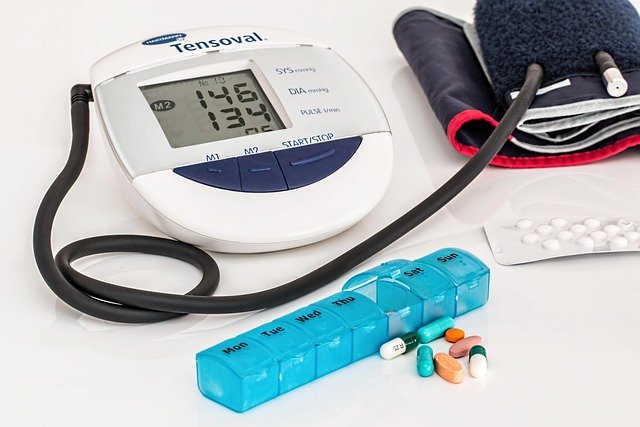Unveiling Leg Blood Clots: Causes, Symptoms, and Prevention
Blood clots in the legs, also known as deep vein thrombosis (DVT), are a serious medical condition that can have life-threatening consequences if left untreated. These clots form in the deep veins of the legs and can potentially travel to other parts of the body, causing severe complications. In this article, we'll explore the causes, symptoms, and prevention methods for leg blood clots, shedding light on this often overlooked health concern.

What Are Leg Blood Clots and Why Are They Dangerous?
Leg blood clots, or deep vein thrombosis, occur when blood coagulates and forms a solid mass within the deep veins of the legs. While blood clotting is a natural and essential process that helps prevent excessive bleeding when we’re injured, clots that form in the deep veins can be dangerous. The primary concern with DVT is that these clots can break free and travel through the bloodstream to other parts of the body, such as the lungs, where they can cause a life-threatening condition called pulmonary embolism. This blockage in the lungs can lead to severe breathing difficulties, chest pain, and even death if not treated promptly.
Recognizing the Symptoms of Leg Blood Clots
Identifying the symptoms of leg blood clots is crucial for early detection and treatment. Unfortunately, DVT can sometimes be asymptomatic, making it challenging to diagnose. However, when symptoms do occur, they often include swelling in one or both legs, pain or tenderness in the affected area (especially when standing or walking), warmth in the skin over the clot, and redness or discoloration of the skin. In some cases, people may experience a feeling of heaviness in the affected leg or notice visible surface veins. It’s important to note that these symptoms can also be associated with other conditions, so consulting a healthcare professional for an accurate diagnosis is essential.
Causes and Risk Factors for Leg Blood Clots
Several factors can increase the likelihood of developing leg blood clots. One of the most significant risk factors is prolonged immobility, such as during long flights, extended bed rest, or recovery from surgery. Other risk factors include obesity, smoking, pregnancy, use of hormonal contraceptives or hormone replacement therapy, and certain medical conditions like cancer or heart disease. Age also plays a role, with individuals over 60 being at higher risk. Additionally, a family history of blood clots or certain genetic disorders that affect blood clotting can increase susceptibility to DVT. Understanding these risk factors can help individuals take appropriate preventive measures and seek medical attention when necessary.
The Health Risks Associated With Leg Blood Clots
The potential health risks associated with leg blood clots extend far beyond localized discomfort. As mentioned earlier, the most severe complication is pulmonary embolism, which occurs when a clot travels to the lungs. This can be life-threatening and requires immediate medical attention. Other complications include post-thrombotic syndrome, a long-term condition that can cause chronic leg pain, swelling, and skin changes. In rare cases, blood clots can also travel to the brain, causing a stroke. Furthermore, untreated DVT can lead to chronic venous insufficiency, a condition where the veins in the legs struggle to return blood to the heart efficiently, resulting in persistent swelling and skin changes.
Prevention Strategies for Leg Blood Clots
Preventing leg blood clots involves a combination of lifestyle changes and awareness of risk factors. Regular physical activity is crucial, especially for those with sedentary jobs or lifestyles. When traveling long distances, it’s important to take frequent breaks to walk and stretch. Staying hydrated and maintaining a healthy weight can also reduce the risk of clot formation. For individuals with known risk factors, compression stockings may be recommended to improve blood flow in the legs. In some cases, healthcare providers may prescribe blood-thinning medications for those at high risk of developing clots. It’s essential to discuss any concerns or risk factors with a healthcare professional to develop a personalized prevention plan.
Global Awareness and Treatment Advances
The shared information of this generated article is up-to-date as of the publishing date. For more up-to-date information, please conduct own reserach.
Worldwide, there’s growing awareness about the importance of recognizing and treating leg blood clots promptly. Medical advancements have led to improved diagnostic techniques, such as ultrasound and D-dimer blood tests, which help identify DVT more accurately. Treatment options have also expanded, with new oral anticoagulants offering alternatives to traditional blood thinners like warfarin. These newer medications often require less frequent monitoring and have fewer food interactions, making them more convenient for patients. Additionally, minimally invasive procedures like catheter-directed thrombolysis are becoming more widely available, offering targeted treatment for severe cases of DVT.
Navigating DVT Management: A Comparative Look
| Treatment Option | Provider Type | Estimated Cost Range (USD) |
|---|---|---|
| Anticoagulant Medication | Primary Care Physician | $50 - $1,500 per month |
| Compression Stockings | Medical Supply Stores | $20 - $200 per pair |
| Catheter-Directed Thrombolysis | Interventional Radiologist | $10,000 - $20,000 per procedure |
| Vena Cava Filter Placement | Vascular Surgeon | $6,000 - $15,000 per procedure |
Understanding leg blood clots is crucial for maintaining overall health and preventing potentially life-threatening complications. By recognizing the symptoms, understanding risk factors, and implementing preventive measures, individuals can significantly reduce their chances of developing DVT. Regular check-ups with healthcare providers, especially for those with known risk factors, can help in early detection and management of this condition. As research continues and treatment options evolve, the outlook for those affected by leg blood clots continues to improve. However, the best approach remains prevention through awareness and lifestyle modifications.
Disclaimer: This article is for informational purposes only and should not be considered medical advice. Please consult a qualified healthcare professional for personalized guidance and treatment.




